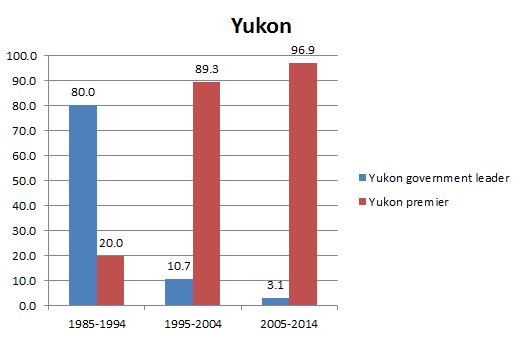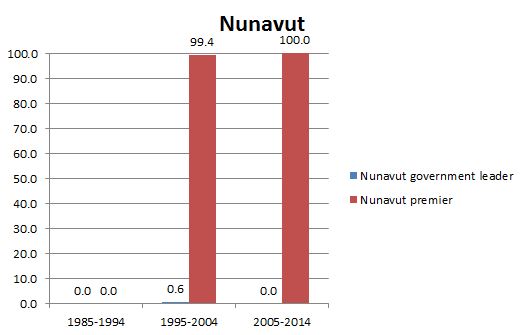DCHP-2
government leader Government Leader, Government leader DCHP-2 (October 2016)
n. — now near-obsolete, Politics
an elected leader of a territorial government in Canada.
Type: 3. Semantic Change — The term government leader describes the elected chair of an executive council in one of Canada's three territories: the Yukon, Nunavut and the Northwest Territories. The main authority of a government leader is to "determine the size and the appointments to the executive council" (see the first 2013 quotation). The earliest found Canadian attestation of government leader (see the 1979 quotation) coincides with the introduction of party politics and responsible government in the Yukon (see Canadian Heritage reference).
The provincial equivalent of government leader is a premier (see the 2011 quotation, see premier). Accordingly, the title of government leader appears to have been officially changed to premier (see the 2013 and second 2014 quotations); the timing of this title change within each territory appears to have varied, occurring in the Northwest Territories in 1994 (see Legislative Assembly NWT reference) and the Yukon in 1996 (see Election Almanac reference). This official change is reflected in everyday language use (see Charts 1 to 3); a comparison of competing variants in the Canadian Newsstand Complete database shows a notable decline in the use of government leader and increase in the use of premier throughout three time periods between 1985 to 2014 (see Charts 1-3). Specifically, the Yukon's use of government leader dropped from 80 percent to 3 percent between the first and third time period (see Chart 1). Similarly, the Northwest Territories' use of government leader declined from 98 percent to 1 per cent between the first and third time period (see Chart 2). The term is marked as a semantic change, as government leader also refers to a position in the Senate, known formally as the Leader of the Government.
See also COD-2, s.v. "government leader", which is described as being used in Canada.See also: premier
References:
- COD-2
- Canadian Heritage "Yukon" Accessed 23 Jul. 2014
- Election Almanac "Premiers of Yukon" Accessed 23 Jul. 2014
- Legislative Assembly NWT "Premier and Ministers" Accessed 23 Jul. 2014
Images:
Chart 1: Canadian Newsstand Complete, 24 Jul. 2014
Chart 2: Canadian Newsstand Complete, 24 Jul. 2014
Chart 3: Canadian Newsstand Complete, 24 Jul. 2014


